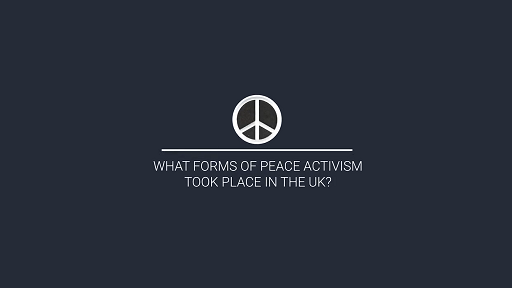2 The Euromissile Crisis and anti-nuclear activism in the UK in the early 1980s
A second and even larger wave of anti-nuclear activism emerged in the late 1970s and peaked in the early 1980s. In Western Europe, this was chiefly triggered by the 1979 decision by the North Atlantic Treaty Organisation (NATO) to deploy hundreds of new American nuclear weapons in five Western European countries: the Federal Republic of Germany, the United Kingdom, Italy, the Netherlands and Belgium. Opposition to the deployment of these ‘Euromissiles’ surged in the early 1980s, as citizens feared such an escalation in the nuclear arms race would make nuclear war more likely.

Activity 1
Watch this video featuring activists, policymakers and historians discussing what forms of action took place in the UK during the ‘Euromissile Crisis’ of the early 1980s, then answer the questions below.

Transcript
[MUSIC PLAYING]
[LAUGHS]
- What form did activism take in the UK in the early 1980s?
- How did activism differ across the UK?
Discussion
- Perhaps the two most visible forms of anti-nuclear activism were large public demonstrations, such as those in Hyde Park or in Trafalgar Square in London, and the Women’s Peace Camp set up at Greenham Common, one of the two military bases in the UK where the new ‘Euromissiles’ were to be deployed. Additional activities included letter-writing campaigns, public education and lobbying Members of Parliament.
- In the UK, the focus of anti-nuclear activism in England and Wales was mainly on the Cruise missiles which were to be stationed in southern England. In Scotland, however, there was a greater emphasis on opposing the UK government’s nuclear weapons systems – Polaris, and then Trident – which were deployed on submarines based at Clyde Naval Base, near Glasgow. These issues resonated differently in different parts of the UK, leading to more targeted local campaigns.
The late 1970s and early 1980s saw the emergence of new forms of anti-nuclear activism. Especially striking were ‘die-ins’, in which groups of activists would fall to the ground and play dead, drawing attention to the deadly effects of nuclear weapons. Another iconic form of action was peace camps, in which activists would remain at a particular site (often a military base where nuclear weapons were deployed) for months or years at a time. The Greenham Common Women’s Peace Camp in Berkshire, England, was established in 1981 and remained at the site until 2000. The period also saw massive anti-nuclear demonstrations as well as less visible forms of activism such as letter-writing and public education campaigns.
The peace movement was a heterogeneous phenomenon encompassing a broad spectrum of autonomous activists and youth movements, but also institutions such as political parties, trade unions and churches. Beyond those involved in the anti-nuclear campaign in some way, popular culture reflected the pervasive anxieties of the very real possibility of a nuclear war that could lead to the end of humanity. Pop music from this period saw artists ranging from ABBA, Metallica, Queen, and Sting to Nena reflecting these fears of nuclear war in their lyrics. Nuclear weapons and the possibility of nuclear annihilation were a prominent topic in films, television, video games, comic books and board games. Along with the widespread anti-nuclear activism seen across many countries, these cultural outputs reveal just how ubiquitous fears of the dangers of nuclear weapons were during this period.

In addition to fears that these new ‘Euromissiles’ would make nuclear war more likely, many citizens felt that the imposition of new American nuclear weapons on their country’s soil undermined national sovereignty. As a result, anti-Americanism was often a feature of anti-nuclear protest in Europe in the early 1980s.
In the next section, you’ll see how the themes of anti-nuclear activism and national sovereignty interacted in other parts of the world.
